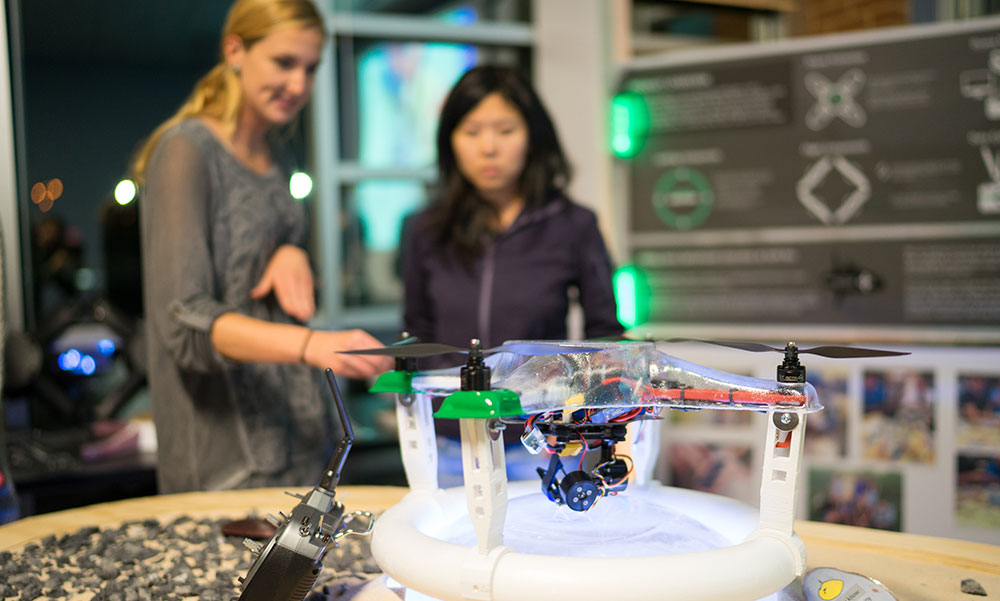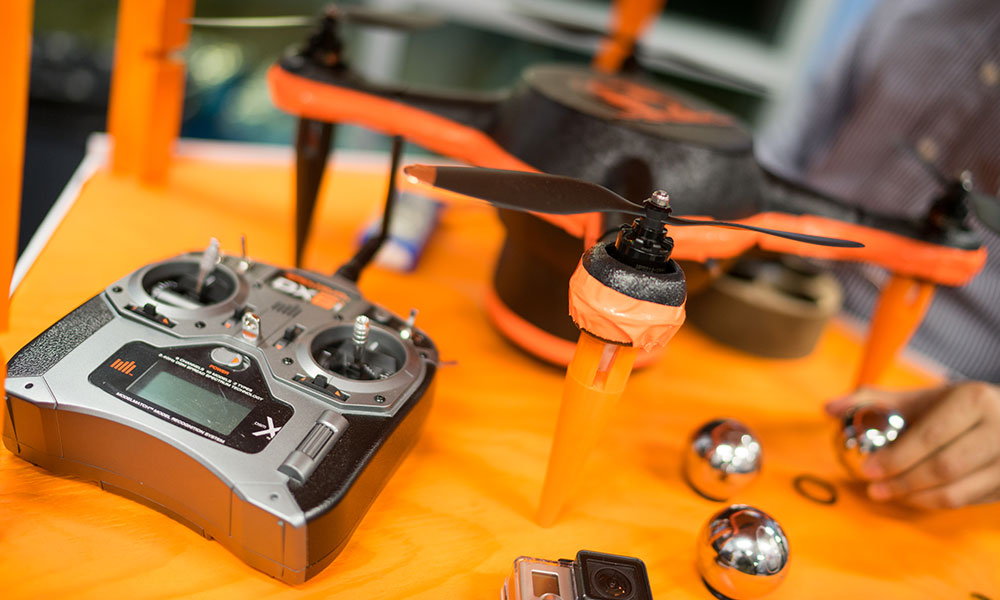Drones rise to the occasion
Students equip quadcopter to save historic wall in Colombia
Science and Technology
SUMMARY: The six students, who have dubbed their group, "The City Walls Team," are equipping a drone--built last spring by JMU students in a physics course--to photograph the wall when they visit the country in January. Photos are from the 2015 class presentation.

How can a group of JMU students help a doctoral student in Colombia determine the effects of climate change on a historically and culturally significant wall in Cartagena?
With a drone, of course.
The six students, who have dubbed their group, "The City Walls Team," are equipping a drone—built last spring by JMU students in a physics course—to photograph the wall when they visit the country in January. The team will then use the photos to create a 3D model of the wall for Manuel Saba, an engineering doctoral student at the University of Cartagena. Saba will add internal details and do static and dynamic analysis of the structure to see its weaknesses. His goal is to determine the porosity of the stone and research what effect acid rain and other climate factors have on the structural integrity of the wall, which is a UNESCO protected site.
The City Walls Team is one of eight cross-disciplinary teams—from three universities—outfitting drones to tackle a variety of global problems. The students are doing the work in a course called "The Virginia Drones Project."
Two teams, one from JMU and the other from George Mason University, are working on projects to combat the decline of honeybees. Another pair of JMU teams are designing drones to help restore telecommunications for first responders in areas hit by hurricanes; and to detect and detonate landmines.
Three teams of Old Dominion University students are working on projects to help firefighters locate fires in remote areas with minimal roads; to help first responders serving remote areas with minimal roads locate and assess emergencies that require sea rescues; and to accurately map areas of Norfolk that are prone to tidal flooding.
The class meets on Wednesday evenings and is taught by faculty from each university and a group of Northern Virginia entrepreneurs who produce commercial drone technology and run Nova Labs, a makerspace in Reston. The students and faculty are linked by a variety of real time videoconferencing technology so no one has to travel to participate.
Several teams are scheduled to present their projects at 6 p.m. Wednesday, Dec. 7, at Lakeview Hall adjacent to the Port Republic Road entrance to campus.
